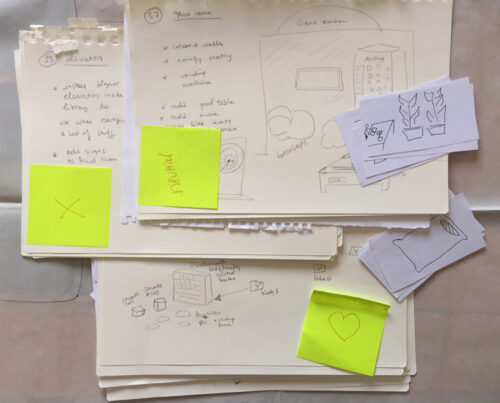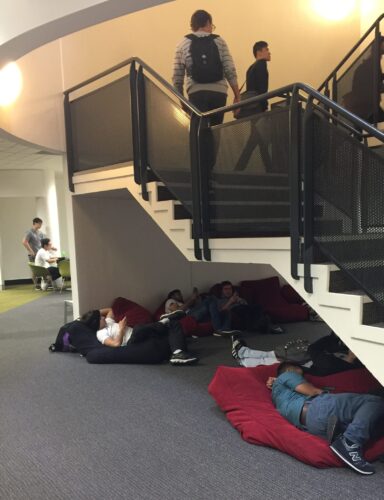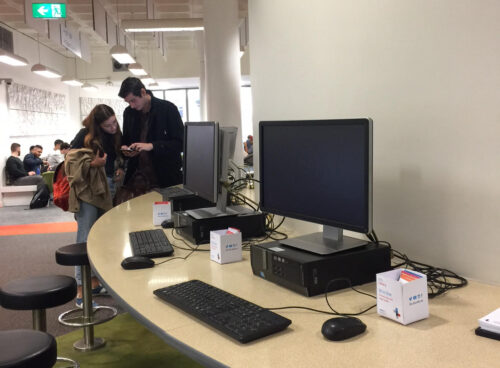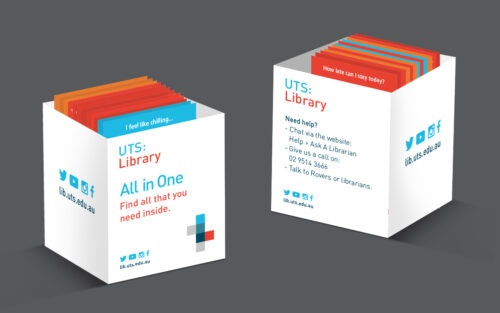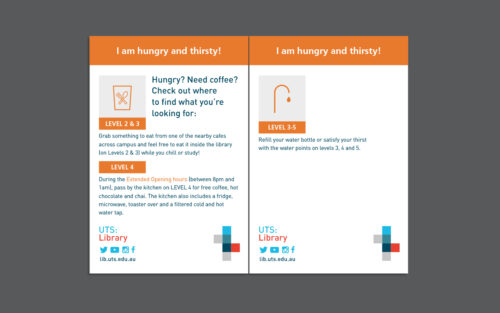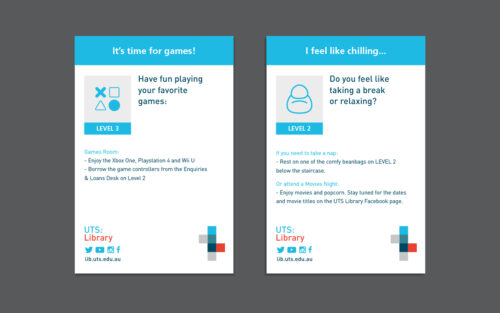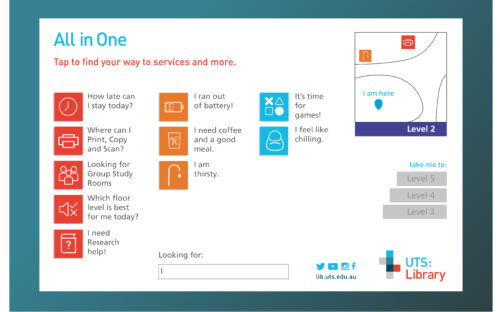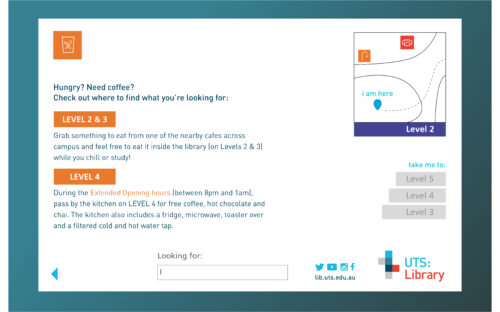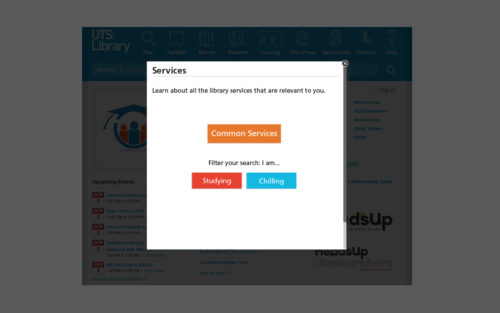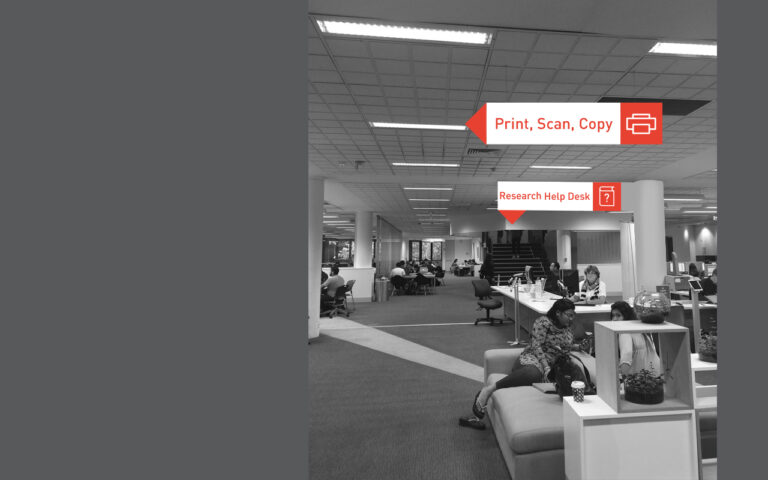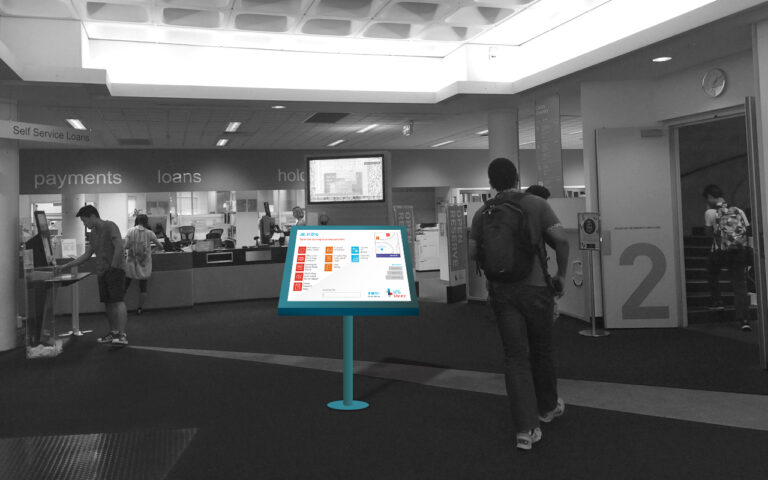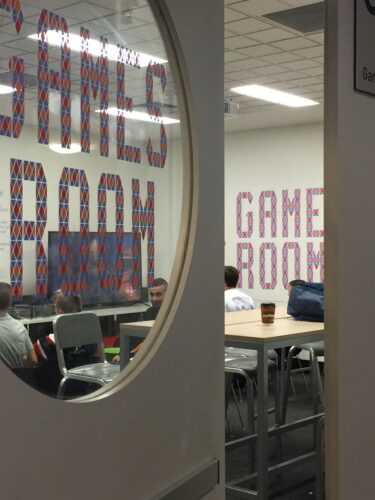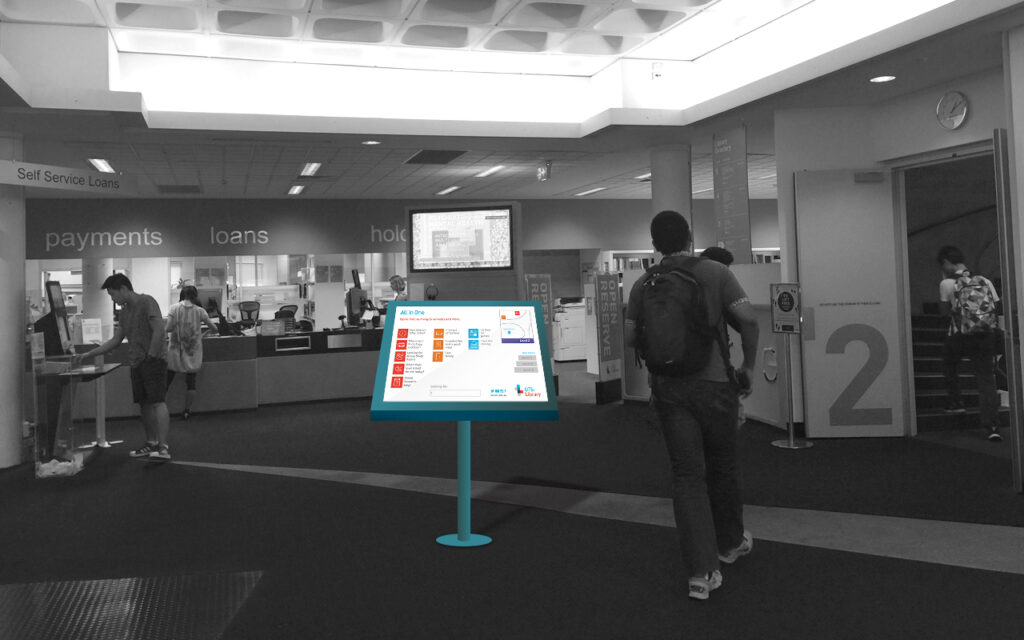
UTS Library: Sharing Information amidst the Personalised and the Generic
For the University of Technology Sydney
The project in numbers
30+ Library users participated in the Prototyping Interviews
25+ Students interviewed for User Research
5+ Ideas of the Future State
Country
Australia
Overview
In the beginning of the project, the brief was to develop a service model based on the students’ perspectives of extended Library opening hours. We had to look at the data gathered from the first 24 hours over 5 days pilot in 2016 and we had to provide recommendations for the upcoming extended hours session of the spring semester. This brief changed later on during the Research & Pivot phases.
Goal
Share information regularly with the Library visitors in an efficient way. Learning the difference between the personalized and the generic user experience inside a Library.
My Role
Service Designer, Researcher, Graphic Designer
Methods
User Research, User Prototyping, Interviews, Design+Systems Thinking, Design Sprints, Stakeholders Mapping
Tools
Adobe Programs: IIllustrator, InDesign, Photoshop, Acrobat
Year
2017
Learn More
PDF
Research
We started the project doing interviews and observations in the library. We spoke to library staff, security staff, students (undergrads & post-grads). In total we spoke to approx. 50+ people throughout the entire project. We developed several sketches in the beginning along with ideas that we tested around. Based on the interviews, what we found out was totally different from what we had assumed.
For example, the role of the library (in the librarian’s perspective) is still perceived as rather traditional. However, the library still wants to change its image, which is contradictory to how it is perceived now.
Also, based on the interviews and observations conducted, we discovered that the library means something else to its users. After having a clearer idea of our users and the role of the library. We compiled several paint points for both the library and its users. For the library the key issues were: cost / communication and image / having more users using the services. For the chillers the space was an issue.
For those who are there to study, access to resources was a pain point.
However, both lacked information about the library services due to lack of communication from the library (in their opinion). For example, postgrads and students who work had no idea about the Library news and a part of that was not spending a lot of time on campus or inside the library except for their classes.
In addition, we found out that:
– Students are annoyed that the Library schedule keeps changing and it is confusing where some even suggested sticking to one schedule throughout the year.
– Students don’t like to read a lot of text – unless information is relevant to their needs.
Many do not read the Library brochures because it contains a lot of text and they feel it is generic so they would rather ask their friends.
– Also they complained that they had no idea about the extended hours last semester and that communication for that must happen ahead of time.
Re-framing the Problem
Initially we started with a 24/5 brief and along the way, based on these findings, we reframed the problem while keeping in mind the vision of the library which is to deliver a world-leading library connecting people, knowledge and culture at the heart of the UTS campus.
Even though the communication platforms are many as we are seeing on this slide. If students do not know that some of these channels exist, creating a new channel will not help but informing students that these platforms already exist can be part of a bigger solution to further inform students of all the Library services relevant to them.
Based on all of these findings and because users do not know what is out there and how to use it, we need to reach them and communicate to them while they are doing their activities instead of waiting for them to come to us to learn about the services.
For millennials (who are part of our users), time is of major value because they grew up in an instantaneous era where immediacy is a necessity.
Insights
Based on the research & interviews, the majority of users (library visitors) are there to either simply chill or to study. It was important to be aware of these 2 users especially that almost 40% are chillers. For the library, this will affect the way it communicates and delivers its services.
The traditional role of the library is reflected here because most of the current available services within it are directed to the users who are there to study.
Key Learnings
Re-framing a problem, pivoting and testing assumptions are the most valuable steps in the Service Design process as they re-direct the project into unimaginable routes which make room for surprises!
Ideation & Service Concepts
Creating the All in One box which includes informative cards that answer the instant needs of our users who both chill and study.
The cards are color coded. Blue is for chillers. Red is for those who are there to study. And orange is for the common services shared among the two. Each card is targeting a specific personalized need.
We tested the box prototype in its smaller version inside the library across the different levels. We discovered that while users are busy using a service or studying individually, they were not engaging with the box. For example, when they were printing, using the reference desk and studying individually.
Users who were sitting in groups or simply sitting waiting, chilling, eating or recharging their phones, were engaging with it. We also observed that users are mostly on screens whether they are chilling or studying. They are on the desktop computer, using their laptops, iphones or ipads.
As a result we decided to take the idea from print to digital by integrating it through the current library website and wayfinding within the space. This can also be eventually applied across the communication platforms stated above. We applied the idea on a digital screen that helps users find their way to the services they need as they enter the library.
On the digital screen, users can tap on a specific need that they have and get directed to it. The main screen will include the key needs and will be divided into the common services, the services used by chillers and those who prefer to study. They can also search for something specific.
They can also be directed to the location of services for example; if they click on the “I am hungry and thirsty” icon, they will be informed about the Kitchen on Level 4 and view a map to know where it exactly is at. They can also go through all the levels from one screen and find out what’s available on each floor. And whatever they see on the screen will also be present throughout the library wayfinding system. We also integrated this through the library website where users can click on the services button to learn more.
Outcome
Based on that we devised the following design principles that can govern future ideas:
1. Placement of print material: From what we discovered, students do not engage with print material when they are using a service or busy studying individually. In these moments, they are too focused on their activity and almost behaving in a robotic way. However, when students are chilling, waiting, recharging or sitting studying in groups, they tend to engage more with print material.
2. User-centered communication:
– Deliver user related information in an instant way by speaking to cohorts (study / chill) instead of general students.
– Develop and communicate more services for both user groups equally.
3. Shifting from text-based information to infographics: Students spoke about not wanting to read a lot of text. They do not even have a lot of time to read unless it is something easy to understand, quick and most importantly satisfies their instant needs.
4. Consistency between the digital and print: We need to keep both print and digital platforms of communication while ensuring consistency across both. Content that is available in print must be accessible on all other communication platforms.
Benefits for the library:
User-centered method of delivering information where services are categorized according to the people
Consistency and linking the existing communication channels
More users using the offered services. And the more they use the services, the more experienced they become with them.
Staff efficiency: For example, the RHD team can focus more on their tasks rather than answering all types of general questions.
User Benefits:
User-centered method of receiving information
Making use of all the relevant library services
Hassle-free and instantaneous access to data
